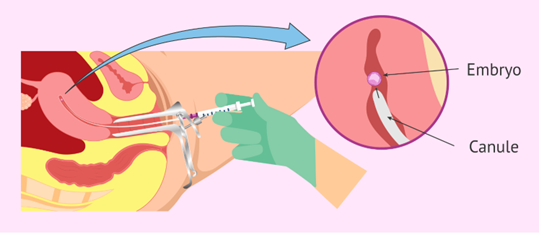The transfer of frozen embryos
(FET)
- Menu

The patient who is undergoing the second part should prepare her endometrial lining adequately to increase the chances for embryo implantation, thereby increasing the likelihood of getting pregnant.
1. Endometrial preparation
Visit our clinic at the beginning of menstruation cycle in order to block the natural regulation of hormones, and control the cycle artificially.
Then, the medical treatment to follow includes administering estrogens orally. Additionally, about 3-5 days before the transfer, she has to take progesterone (pills or vaginal pessaries).
These medications should be taken from the first or third day of menstruation, that is, at the beginning of the cycle, until the day of the embryo transfer (in total, 10-15 days in a row). During this time period, you will have to visit your doctor to check your endometrium via ultrasound once or twice.
When the endometrial is receptive, that is, it has a triple line pattern and its thickness ranges between 7 and 10 mm, the transfer day is scheduled, and a protocol for the intake ( or injection) of progesterone is established.
2. Embryo thawing
When the embryo transfer day is set, the embryos are thawed considering the day when they were transferred.
3. Embryo transfer
The transfer is actually a quick, simple, and painless procedure and anesthesia is not required.
The doctor uses a cannula that contains the embryo(s) to transfer and inserts it gently in your uterus.
When the doctor reaches the uterine fundus, taking care not to damage the walls of the uterus, the embryos are placed in the uterine cavity through an ultrasound-guided procedure, which means you can follow the pathway of the cannula from beginning to end of the process.

Finally, you will have to lie flat for about 30 minutes. After this rest time, you can continue with your normal lifestyle, but avoiding major physical efforts.